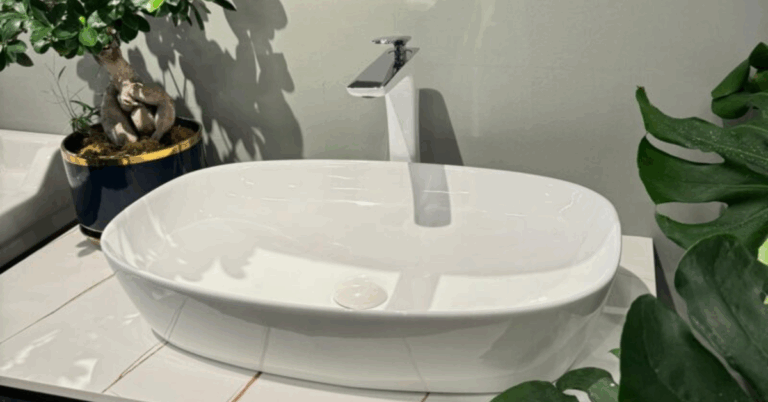Sleek, Safe, and Stylish: The Complete Guide to Glass Hobs in Singapore
In the modern Singaporean kitchen, style is just as important as function. That’s why more homeowners are turning to glass hobs — a sleek and elegant cooking solution that combines beauty, performance, and practicality.
Whether you’re outfitting your BTO flat, renovating a condo, or upgrading a landed property kitchen, choosing the right Glass Hob Singapore is key to efficient and enjoyable cooking. From heat distribution and safety to design and cleaning, there’s much to consider before making the right investment.
In this guide, we’ll explore what makes glass hobs popular in Singapore, compare them to other hob types, and help you decide which model suits your lifestyle best.
What Is a Glass Hob?
A glass hob is a type of cooktop where the surface is made from toughened, heat-resistant glass — usually tempered black glass — that provides a flat, smooth, and glossy appearance.
While the underlying burner can be gas, induction, or ceramic, the glass surface gives the hob a seamless, modern look. These hobs are particularly common in contemporary kitchen designs, where clean lines and premium finishes matter.
Types of Glass Hobs in Singapore
1. Gas Glass Hobs
These hobs use gas burners set into a glass surface, offering a traditional cooking method with a modern appearance.
Pros:
-
Instant flame control
-
Ideal for Asian-style cooking (stir-frying, wok cooking)
-
Affordable and efficient
Cons:
-
Requires gas line or LPG
-
Can be harder to clean around burners
Best for: Home cooks who love traditional flame cooking but want a stylish finish.
2. Induction Glass Hobs
These cooktops use electromagnetic energy to heat pots and pans directly through a glass surface, rather than heating the hob itself.
Pros:
-
Fast heating
-
Energy-efficient
-
Flat and easy to clean
-
Cool-to-touch surface
Cons:
-
Only works with induction-compatible cookware
-
Higher initial cost
Best for: Busy households that prioritize safety, speed, and cleanliness.
3. Ceramic Glass Hobs
These use electric heating elements beneath the glass surface, heating the glass first and then the cookware.
Pros:
-
Compatible with all cookware types
-
Sleek and minimalist
-
Smooth glass surface
Cons:
-
Slower to heat and cool down
-
Surface stays hot after use
Best for: Casual cooks who prefer a stylish electric hob without changing their pots and pans.
Why Choose a Glass Hob in Singapore?
1. Modern Aesthetics
Glass hobs lend a sleek, premium feel to any kitchen. Their glossy surface pairs well with granite countertops, minimalist cabinets, and stainless steel appliances.
2. Space-Saving Design
Ideal for compact Singapore kitchens, glass hobs provide a flat surface that doubles as extra counter space when not in use.
3. Easy Maintenance
With no grates or crevices, a glass hob is far easier to clean than traditional gas stoves. Just a wipe with a damp cloth is often enough to keep it spotless.
4. Safe for Families
Induction glass hobs, in particular, are child-safe and cool to the touch when not in use. Many models come with safety locks, automatic shutoff, and heat indicators.
5. Precision Cooking
Glass hobs, especially induction types, offer responsive heat control — essential for achieving consistent cooking results.
Considerations When Buying a Glass Hob in Singapore
1. Size and Number of Burners
Most glass hobs come in:
-
2-burner models (great for compact HDB kitchens)
-
3-burner models (ideal for medium-sized families)
-
4-burner or more (for larger households or avid cooks)
Measure your countertop cutout before purchasing to ensure compatibility.
2. Type of Heat Source
-
Gas: Great for flexibility and powerful cooking, but needs ventilation.
-
Induction: Ultra-efficient, perfect for energy-conscious households.
-
Ceramic: Sleek and easy to use, though less responsive than induction.
Choose based on your cooking style and the availability of gas lines.
3. Tempered Glass Quality
Look for heat-resistant tempered glass that can withstand high temperatures and minor impacts. High-quality glass resists scratches, stains, and cracking.
4. Safety Features
-
Flame failure safety device (for gas hobs)
-
Residual heat indicator
-
Auto shut-off
-
Child lock
These features are especially important for families with kids or elderly members.
5. Cleaning and Maintenance
Some models come with removable burner rings or a seamless top, making cleaning effortless. Always use soft cloths and non-abrasive cleaners to protect the glass finish.
Popular Brands for Glass Hobs in Singapore
Singaporeans trust a range of international and local brands when it comes to glass hobs. Top options include:
-
Brandt: European-made, known for induction and gas hobs with elegant design.
-
EF: Offers affordable yet stylish gas and induction hobs.
-
Rinnai: Reliable gas hobs with wok burners, perfect for Asian cooking.
-
Tecno: A local favorite with affordable pricing and durable tempered glass.
-
Bosch: High-end German brand known for performance and design.
-
Turbo Italia: Known for elegant designs and durable materials.
Maintenance Tips for Glass Hobs
-
Clean After Every Use: Prevent food and grease buildup by wiping down your hob with a damp microfiber cloth.
-
Use Gentle Cleaners: Avoid abrasive powders or scrubbers that may scratch the glass.
-
Avoid Impact: Although tempered glass is strong, dropping heavy pots can cause cracks.
-
Check Gas Burners: For gas hobs, ensure burner heads are clean to prevent uneven flames.
-
Polish Occasionally: Use a glass cooktop polish to maintain the shine.
Frequently Asked Questions (FAQs)
1. Are glass hobs suitable for heavy-duty cooking?
Yes, tempered glass hobs are strong enough to support heavy cookware. Gas glass hobs, in particular, are ideal for wok cooking and stir-frying.
2. Do glass hobs crack easily?
No — the glass used is tempered and designed to withstand high heat and moderate impact. However, dropping heavy items or sudden temperature shocks should be avoided.
3. Which is better: gas, ceramic, or induction glass hob?
Each has its strengths:
-
Gas is versatile and ideal for traditional cooking.
-
Induction offers the best energy efficiency and safety.
-
Ceramic is easy to clean and visually appealing.
Choose based on your cooking needs, cookware, and budget.
4. Can I install a glass hob in an HDB flat?
Absolutely. Just ensure the size fits your existing countertop cutout and that you have the appropriate power/gas supply. For induction hobs, check the power rating against your home’s electrical capacity.
5. What is the average cost of a glass hob in Singapore?
-
Basic 2-burner gas hobs: $200–$400
-
Mid-range 3-burner models: $450–$800
-
High-end induction glass hobs: $800–$1500+
Prices vary based on brand, burner type, and features.
6. Is a glass hob harder to clean than a stainless steel one?
Not at all. In fact, glass hobs are often easier to clean because of their smooth, non-porous surface. Just use a soft cloth and a mild cleaner — no scrubbing needed.
Final Thoughts
The glass hob is a stylish, efficient, and practical upgrade for any Singapore kitchen. Whether you’re cooking for a family of five or just enjoying a solo meal, it offers both form and function. With the right features and setup, a glass hob can elevate your cooking experience while complementing your kitchen’s modern aesthetic.
From gas to induction to ceramic options, there’s a perfect glass hob out there for every home and budget. Just remember to assess your cooking habits, kitchen size, and safety requirements before choosing the best fit.







